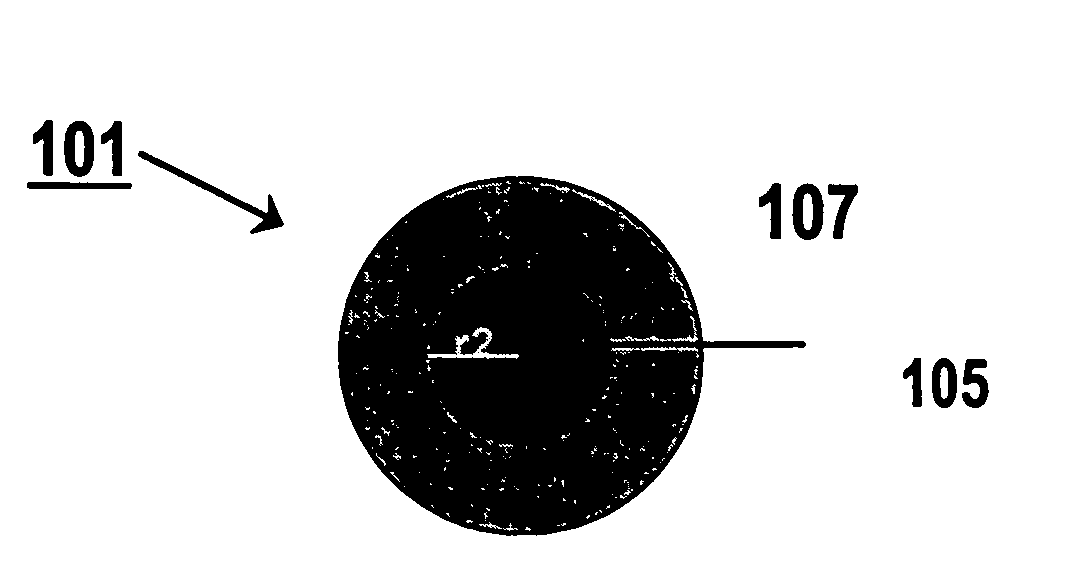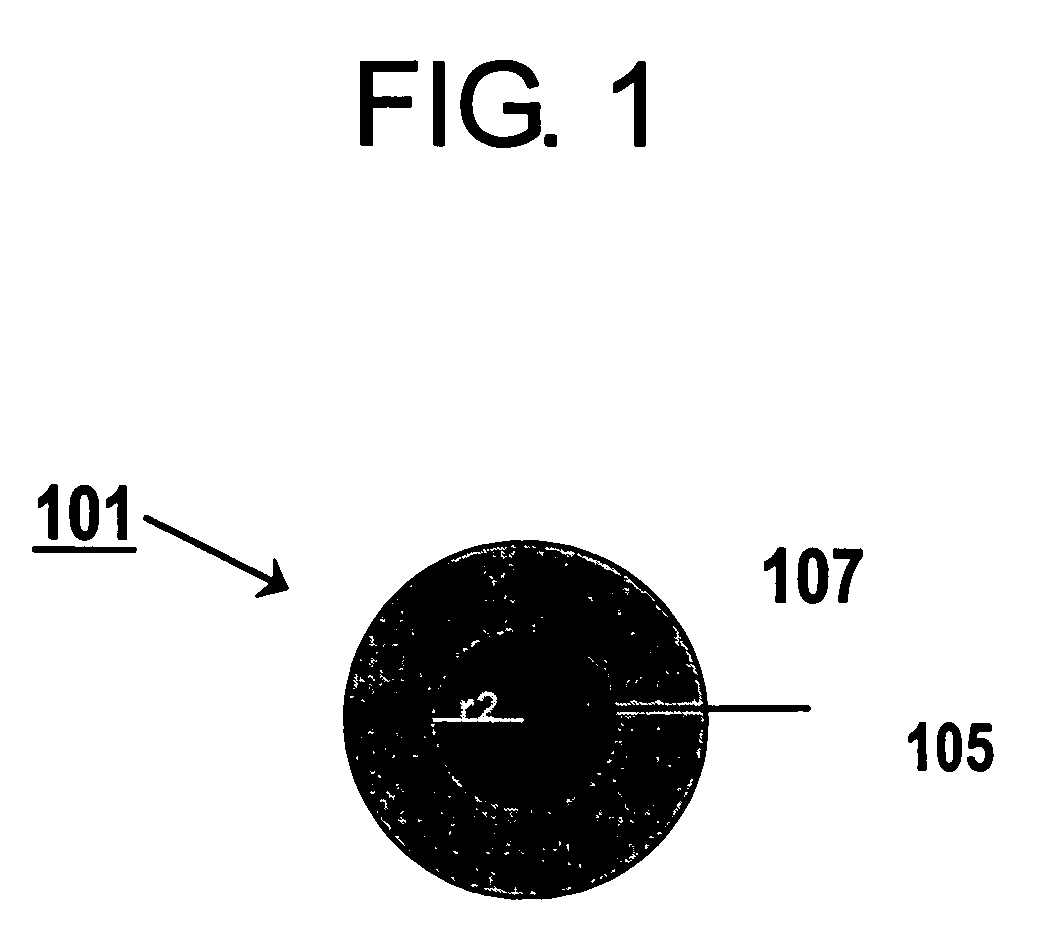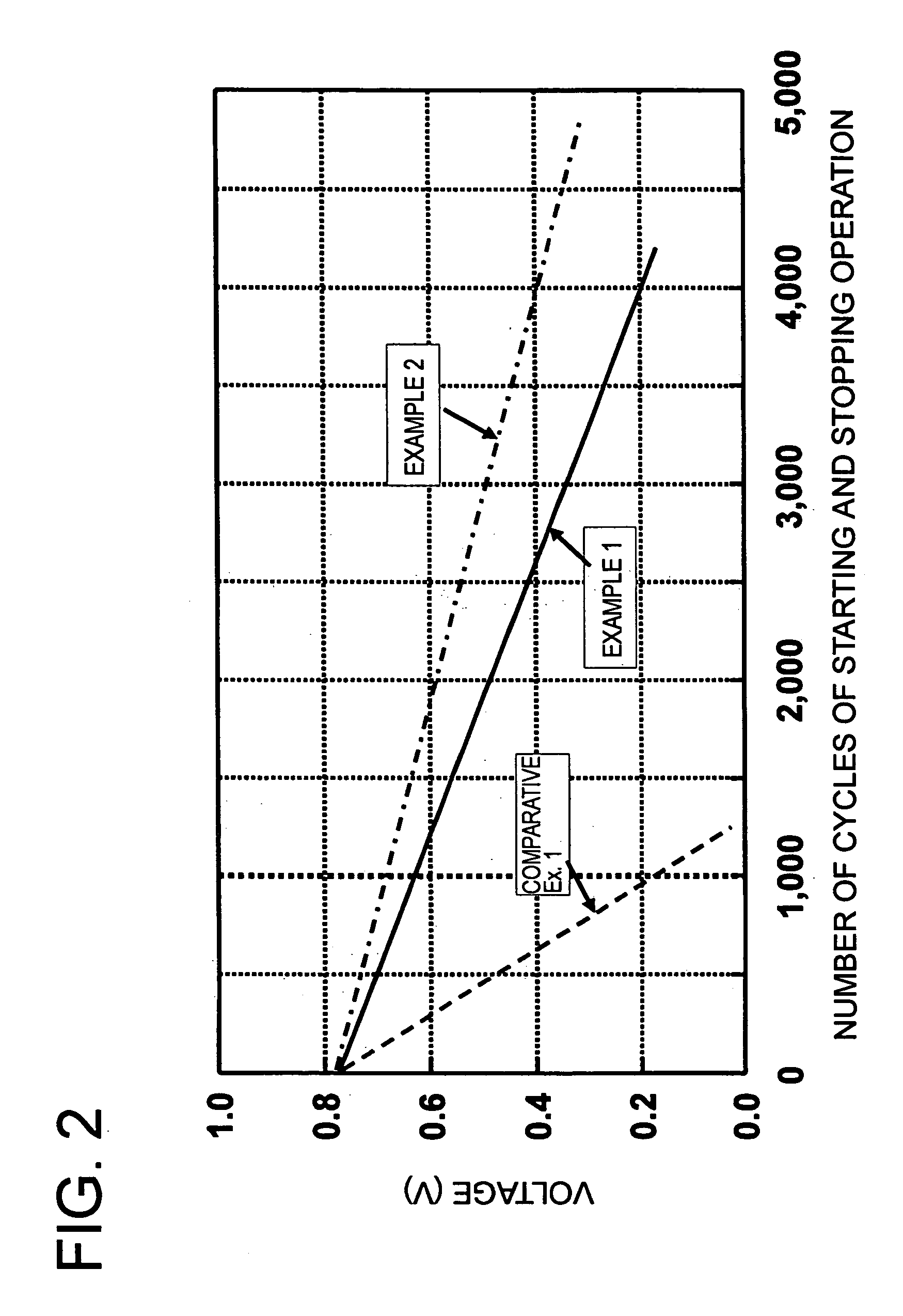Electrode catalyst for fuel cell and method for production thereof
a fuel cell and electrode catalyst technology, applied in the direction of metal/metal-oxide/metal-hydroxide catalysts, natural mineral layered products, synthetic resin layered products, etc., can solve the problems of decreasing the surface area of available electrodes, affecting so as to delay the liquation of noble metals and other components, the effect of liquization
- Summary
- Abstract
- Description
- Claims
- Application Information
AI Technical Summary
Benefits of technology
Problems solved by technology
Method used
Image
Examples
example 1
[0058]The amount, 4.0 g, of a highly electroconductive carbon black (a product having a BET surface area of 800 m2 / g, made by Ketjen Black International Corp. and sold under the trademark designation of “Ketjen Black EC”), 8.1 g of an aqueous solution of cobalt nitrate (Co(NO3)2.6H2O), and 400 g of an aqueous solution of dinitrodiammine platinum (Pt concentration 1.0%) were added together and stirred for one hour and then mixed with 200 g of ethanol and 1 g of sodium hydrogen boride and stirred for one hour. The resultant mixture was heated to 85° C. over a period of 30 minutes, further stirred and mixed at 85° C. for six hours, and then allowed to cool to room temperature over a period of one hour. The produced solution and 10 g of an aqueous 5% tetramethyl ammonkium hydroxide solution were added thereto and stirred together for one hour.
[0059]The precipitate was separated by filtration and the resultant solid was dried under a reduced pressure at 85° C. for 12 hours. Then, the dri...
example 2
[0062]A catalyst comprising Pt alloy particles having an average particle diameter of 3.5 nm, a deposited Pt concentration of 50%, and a composition ratio of Pt0.75Co0.25 was obtained by following the procedure of Example 1 and using a highly electroconductive carbon black (a product having a BET surface area of 1270 m2 / g, made by Ketjen Black International Corp. and sold under the trademark of “Ketjen Black EC600JD”). The catalyst powder was suspended for one hour in 100 g of a concentrated sulfuric acid (0.5M) solution heated in advance to 50° C. to obtain catalyst particles having cobalt liquated from the surface of catalyst particles.
example 3
[0063]A catalyst comprising Pt alloy particles having an average particle diameter of 3.5 nm, a deposited Pt concentration of 50%, and a composition ratio of Pt0.75Co0.25 was obtained by following the procedure of Example 1 and using a highly electroconductive carbon black (a product having a BET surface area of 1270 m2 / g, made by Ketjen Black International Corp. and sold under the trademark of “Ketjen Black EC600JD”). The catalyst powder was suspended for one hour in 100 g of a concentrated sulfuric acid (0.5M) solution heated in advance to 35° C. to effect liquation of cobalt on the surface of catalyst particles. This procedure was performed up to three repetitions. The resultant precipitate was separated by filtration and the solid consequently obtained was dried under a reduced pressure at 85° C. for 12 hours to obtain catalyst particles.
PUM
| Property | Measurement | Unit |
|---|---|---|
| temperature | aaaaa | aaaaa |
| diameter | aaaaa | aaaaa |
| particle diameter | aaaaa | aaaaa |
Abstract
Description
Claims
Application Information
 Login to View More
Login to View More - R&D
- Intellectual Property
- Life Sciences
- Materials
- Tech Scout
- Unparalleled Data Quality
- Higher Quality Content
- 60% Fewer Hallucinations
Browse by: Latest US Patents, China's latest patents, Technical Efficacy Thesaurus, Application Domain, Technology Topic, Popular Technical Reports.
© 2025 PatSnap. All rights reserved.Legal|Privacy policy|Modern Slavery Act Transparency Statement|Sitemap|About US| Contact US: help@patsnap.com



